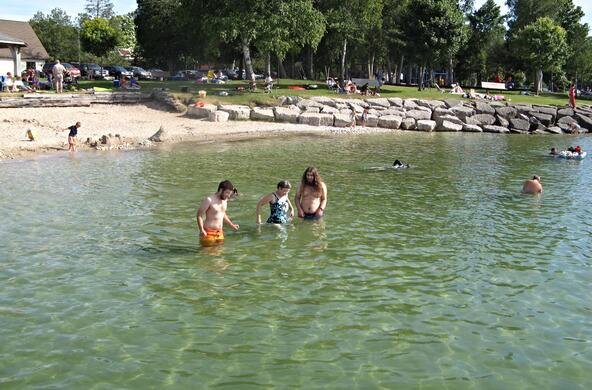The Dutchess County Environmental Management Council recently completed a State of the Environment report for Dutchess County. This is the ninth in a series of articles from the report. The entire report can be found online.
Water is the No. 1 environmental concern among Dutchess County residents. Concerns range from drought and flood prevention to pollution in drinking water, streams, lakes and other water bodies. Protecting water so that it remains consistently available, free of contaminants, safe for humans and other organisms and moves safely through our communities requires careful planning. Effective water protection requires an understanding of how water moves and what it contains. Studies of both water quality and quantity have been done in Dutchess County and provide some understanding of this vital resource.
The Water Resources chapter of the Dutchess County Natural Resource Inventory provides a thorough description of Dutchess County's water. In addition to a summary of how water moves through the water cycle, the document describes each of the county's streams and their watersheds. It also provides a complete description of the current water quality and quantity issues facing the county, including the status of our groundwater.
It describes the importance and location of the county's floodplains and wetlands and what to expect in the future as our climate changes and the county develops. It is an invaluable document for policymakers and the public for understanding water in Dutchess. The Dutchess County Natural Resource Inventory can be found on the county's website, in the planning and development section.
What kinds of contamination can affect water in our county?
Last week, we described sites where hazardous waste has contaminated groundwater by leaking from point sources. Non-point sources of pollution include road salt and agricultural runoff, both of which percolate to groundwater and make their way to drinking water wells. In some parts of our county, streams and other surface water are threatened by waste water, especially in areas where septic systems are dense and are not properly maintained. Proper placement and maintenance of septic systems are critical for protecting our water.
Planners must consider droughts and floods when making decisions about future development. In some areas of our county, groundwater is limited, so relying on it in those areas for drinking water or irrigation is risky.
Damage to structures in floodplains and near streams, during floods is an enormous concern. Knowing what causes floods and preparing for these inevitable events is paramount. Flood risk increases with urban development. Impervious surfaces in upstream communities like parking lots, roofs and roads results in excessive run-off and fast-running, channeled water in downstream communities.
Climate change will bring larger and more frequent floods. The protection of floodplains and wetlands is imperative so that they can act as buffers and provide a safe place for flood waters. New development that incorporates pervious surfaces will also help alleviate devastating floods.
Continued attention to below ground storage of toxic materials and careful planning to limit road salt and agricultural runoff as well as waste water from septic systems and sewage treatment facilities will help protect our above and below ground water. Protection of floodplains and wetlands and limiting the development of impervious surfaces will help to limit flood damage.
Water is a primary concern for Dutchess County residents for very good reasons. No one can live without clean water. It is a critical resource that we should all diligently protect.
Vicky Kelly is a member of the Dutchess County Environmental Management Council and a program manager at the Cary Institute of Ecosystem Studies.





